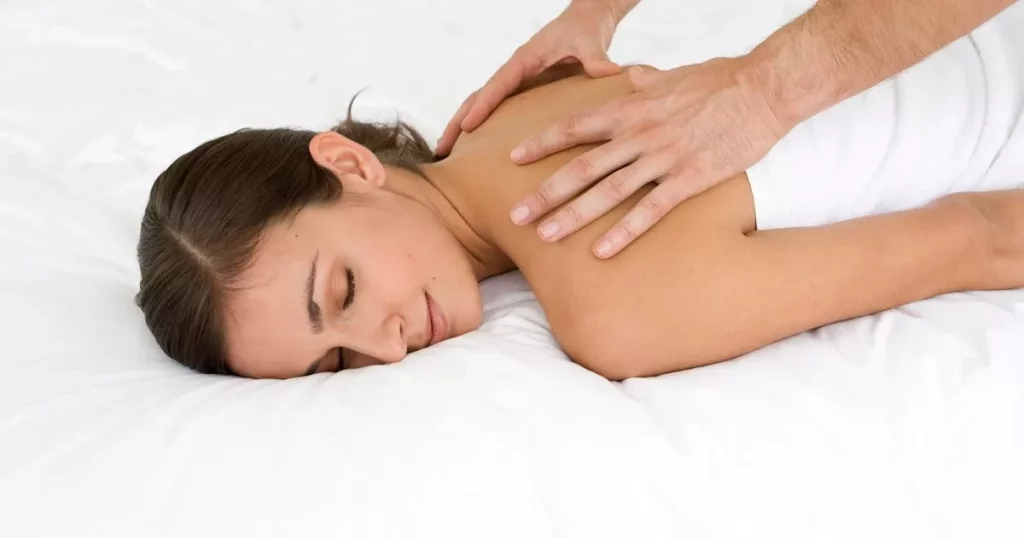Unlocking Wellness: Massage Therapy Explained
Introduction
When it comes to enhancing our overall well-being, various approaches exist, and one such method that has gained significant popularity is massage therapy. Massage therapy goes beyond a mere indulgence; it offers numerous benefits for our physical, mental, and emotional health. In this article, we will delve into the world of massage therapy, exploring its benefits, different types, finding the right therapist, what to expect during a session, and how to incorporate it into your wellness routine.
Table of Contents
Understanding Massage Therapy
Massage therapy is a holistic healing practice that involves the manipulation of soft tissues, such as muscles, tendons, and ligaments, using manual techniques. The primary goal of massage therapy is to promote relaxation, reduce muscle tension, and improve overall well-being. It has been practiced for centuries and is rooted in various ancient healing traditions.
Benefits of Massage Therapy
Massage therapy offers a wide range of benefits that positively impact both our physical and mental health. By targeting specific areas of the body, massage can alleviate pain, improve circulation, and enhance flexibility. Additionally, it has a profound effect on our mental and emotional well-being by reducing stress, anxiety, and promoting relaxation.
Physical Benefits
Massage therapy provides numerous physical benefits. It helps to relieve muscle tension and stiffness, promoting better flexibility and range of motion. Through the manipulation of soft tissues, it can also improve blood circulation, which aids in the delivery of oxygen and nutrients to the muscles. This can help reduce muscle soreness and promote faster recovery from physical activity or injuries.
Mental and Emotional Benefits
In addition to the physical benefits, massage therapy has a profound impact on our mental and emotional well-being. The soothing touch and manipulation of the body release endorphins, which are natural painkillers and mood enhancers. Regular massage sessions can help reduce anxiety, alleviate symptoms of depression, and improve overall mental clarity and focus.
Stress Relief
One of the most sought-after benefits of massage therapy is its ability to reduce stress. Stress is a common issue in today’s fast-paced world, and it can have detrimental effects on both our physical and mental health. Massage therapy offers a much-needed respite from the daily stressors by promoting relaxation and providing a sense of calm. It can help lower the production of stress hormones such as cortisol and increase the production of serotonin, a neurotransmitter that promotes happiness and well-being.
Different Types of Massage Therapy
Massage therapy encompasses various techniques and styles, each with its own specific benefits and focus areas. Understanding the different types can help you choose the most suitable one for your needs.
Swedish massage is one of the most common types of massage therapy. It involves long, flowing strokes, kneading, and circular movements to relax the muscles and improve circulation. This type of massage is excellent for overall relaxation and stress relief.
Deep Tissue Massage
Deep tissue massage focuses on the deeper layers of muscle and connective tissue. It uses more intense pressure and slower strokes to target chronic muscle tension and alleviate pain. This type of massage is beneficial for individuals with specific muscle issues or injuries.
Sports Massage
Sports massage is specifically designed for athletes and individuals engaged in regular physical activity. It aims to prevent and treat sports-related injuries, enhance performance, and promote faster recovery. Sports massage techniques can vary based on the specific sport or activity.
Hot stone massage involves the use of heated stones placed on specific areas of the body. The heat from the stones helps to relax the muscles and allows the therapist to apply deeper pressure if needed. This type of massage can be particularly beneficial for individuals with muscle tension and stress.
Finding the Right Massage Therapist
Finding the right massage therapist is essential to ensure a safe and effective massage experience. Here are some key factors to consider when choosing a massage therapist:
Qualifications and Credentials
Ensure that the massage therapist is properly trained and licensed in your area. Look for certifications or affiliations with reputable massage therapy associations.
Recommendations and Reviews
Ask for recommendations from friends, family, or healthcare professionals who have had positive experiences with massage therapists. Additionally, read reviews and testimonials online to get a sense of the therapist’s reputation.
Personal Comfort
Feeling comfortable with your massage therapist is crucial for a relaxing experience. Consider whether you prefer a male or female therapist and communicate your preferences or any concerns you may have before the session.
What to Expect During a Massage Session
Knowing what to expect during a massage session can help alleviate any anxiety or uncertainty you may have. Here’s a breakdown of the typical process:
Preparing for the Massage
Before the massage, the therapist will discuss your medical history and specific areas of concern. They will also explain the process and answer any questions you may have. You will then be given privacy to undress and lie down on a comfortable massage table, usually covered with soft sheets.
The Massage Process
The therapist will use various techniques and strokes based on the type of massage chosen. They will apply pressure to different areas of your body, focusing on specific muscles or areas of tension. Feel free to communicate with the therapist regarding your comfort level, pressure preferences, or any feedback during the session.
Post-Massage Care
After the massage, the therapist may provide recommendations for post-massage care. This may include drinking plenty of water, avoiding strenuous activities, and applying heat or ice to any areas of soreness.
Incorporating Massage Therapy into Your Wellness Routine
Massage therapy can be an excellent addition to your wellness routine, providing ongoing benefits for your overall well-being. Here are some tips for incorporating massage therapy into your routine:
Frequency and Duration
The frequency and duration of massage sessions depend on your individual needs and preferences. Some individuals benefit from regular weekly or monthly sessions, while others may find bi-monthly or quarterly sessions sufficient. Experiment and listen to your body to determine what works best for you.
Complementary Therapies
Consider combining massage therapy with other wellness practices for enhanced benefits. Yoga, meditation, aromatherapy, or acupuncture can complement the effects of massage therapy and promote overall wellness.
Conclusion
Massage therapy is a powerful tool for unlocking wellness and promoting overall well-being. With its numerous physical, mental, and emotional benefits, it has become an integral part of many people’s self-care routines. By understanding the different types of massage, finding a qualified therapist, and incorporating it into your wellness routine, you can experience the transformative effects of massage therapy firsthand.

FAQs
1. How often should I get a massage?
The frequency of massages depends on individual preferences and needs. Some people benefit from weekly sessions, while others find monthly sessions sufficient. Listen to your body and adjust accordingly.
2. Can I choose a male or female massage therapist?
Yes, you can express your preference for a male or female therapist. It’s important to feel comfortable during the session, so don’t hesitate to communicate your preferences to the massage therapy establishment.
3. Is massage therapy suitable for everyone?
Massage therapy is generally safe and suitable for most people. However, there may be specific medical conditions or situations where massage therapy is not recommended. Consult with your healthcare provider if you have any concerns.
4. What if I feel uncomfortable during the massage?
Communication is key during a massage session. If you feel uncomfortable at any point, whether it’s due to the pressure, technique, or any other reason, don’t hesitate to let your therapist know. They can make adjustments to ensure your comfort.
5. Can I get a massage while pregnant?
Yes, prenatal massage is a specialized type of massage therapy designed for pregnant women. It can help alleviate discomfort, reduce swelling, and promote relaxation. However, it’s important to consult with your healthcare provider and choose a massage therapist experienced in prenatal massage.




